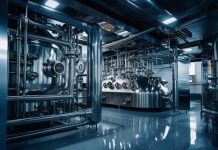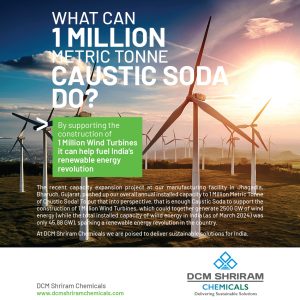Clariant, a sustainability-focused specialty chemical company, announced impressive numbers that highlight how the use of its catalyst products enabled the avoidance of greenhouse gas emissions in 2023.
Combined, customers from a variety of industries, including steel and nitric acid production as well as new energy transition projects, were able to avoid greenhouse gases equivalent to approximately 40 million tons of CO2e. The figure presents an increase of five million tons over 2022, demonstrating the company’s growing commitment to climate protection.
Jens Cuntze, President of Clariant Catalysts commented, “We are happy that our innovative catalysts enabled even stronger carbon reductions for our customers. Year after year, we are living up to our slogan, ‘Greater catalyst. Smaller footprint.’ Besides developing sustainable solutions for the chemical industry, we have invested heavily in novel technologies to accelerate the energy transition. As future technologies are more widely adopted, we expect to see even greater carbon savings over the coming years”.
Richard Haldimann, Chief Technology and Sustainability Officer at Clariant, added, “We are committed to improving energy efficiency and helping industry cut emissions from chemical production. Our solutions aim to lower the carbon footprint of manufacturing both chemicals and fuels. By enhancing yields, optimizing energy utilization, and enabling waste reduction, our cutting-edge catalysts are driving greater sustainability across diverse sectors”.
For the steel industry, Clariant manufactures specialized reformer catalysts for the low-carbon direct reduction of iron (DRI) process of iron production. Compared to the traditional coal-based method, DRI reduces CO2 emissions by approximately 30-40%. Nitric acid production for manufacturing fertilizer is another environmentally challenging process, releasing nitrous oxide equivalent to 100 million tons of CO2 annually. Here, Clariant’s N2O abatement catalysts are able to remove up to 99% of emissions at less than $10 per ton of CO2e avoided.
Furthermore, Clariant offers a wide range of high-performance catalysts that enable the reduction of CO2e emissions in the production of large-volume chemical building blocks such as Styrene, Ethylene, and Propylene.
In addition to providing sustainable solutions for traditional sectors, Clariant has also excelled in developing catalysts that advance energy transition. Together with technology partners, the company is paving the way for deploying blue hydrogen, low-carbon ammonia, green methanol, and sustainable aviation fuels.
Furthermore, Clariant’s expansive portfolio includes state-of-the-art catalysts for hydrogen transportation through chemical conversion, followed by release at the point of use, for example, through ammonia cracking or liquid organic hydrogen carriers (LOHCs). All these emerging applications will contribute in the future to Clariant’s avoided emissions total.
As per the press release, while Clariant is dedicated to supporting its customers’ transition toward climate neutrality, it is also actively involved in reducing its own environmental impact. The company’s ambitious, science-based climate targets for 2030 include the reduction of: scope 1 and 2 absolute greenhouse gas emissions by 40%; landfilled non-hazardous waste by 40%; hazardous waste by 25%; and water consumption by 20%; as well as other commitments. This way, both the company and its customers are driving change to enable a sustainable future.































